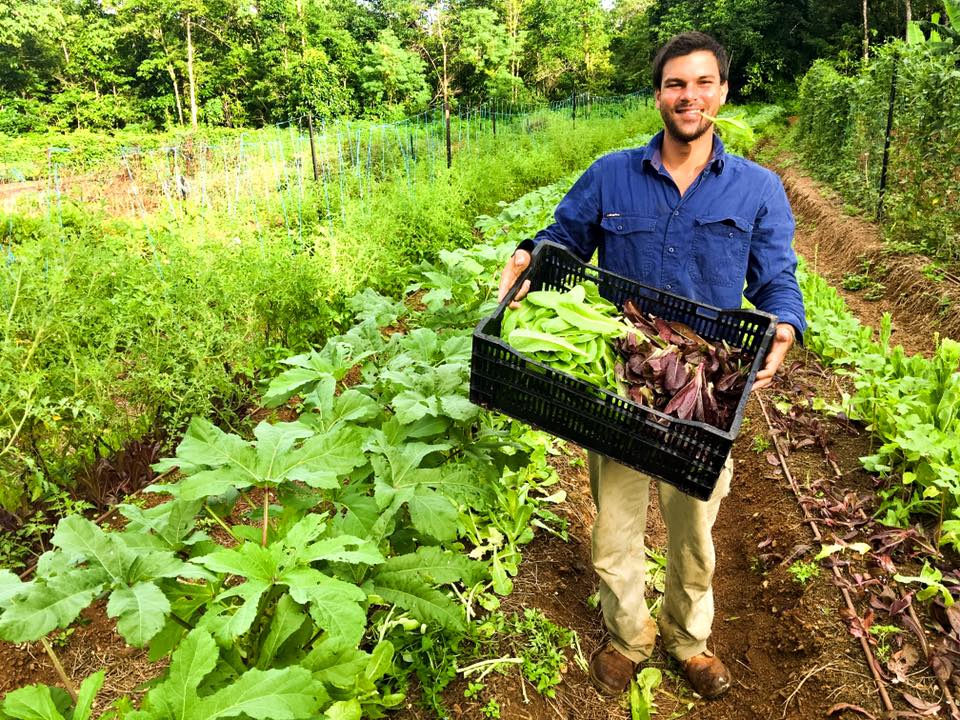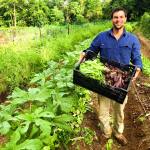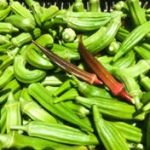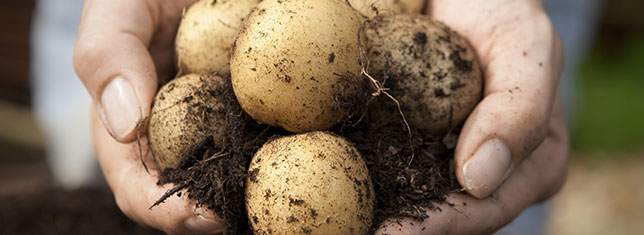…recipes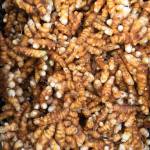 from the Hidden Garden kitchen
from the Hidden Garden kitchen
The team at Hidden Garden Sustainable Farms are helping the Christmas Island community reduce their food miles.
Before Hidden Garden, most of the island’s fresh produce had to be shipped in and the cost to both the environment and the consumer was high. Now the journey from field to plate can be done in a day. Support your local economy by eating local and invest in your own health by eating fresh. Our focus this month is on turmeric – golden fingers of goodness that pack a nutrient punch.
Our April harvest included fresh, organic turmeric, lettuce, eggplant, passionfruit, Spring Onions, snake beans, red and green chilies, okra, cucumber, and young ginger…
Why not try … turmeric
Scientific name: Curcuma longa” Also goes by: many names including: Kunyit, Haridra, Haldi, Halada, Manjal, Zirsood, terre merite, Holdi, Indian Saffron, curcuma, Pasapu, and Arishina. Hails from : India – the largest producer of turmeric since ancient times. Tastes: a little on the bitter side – it is mildly aromatic with scents of orange or ginger – fresh turmeric is more complex than the ground. Cooking styles: grown in India and south Asia, turmeric with its deep orange colour is used both as condiment and food colour. Popular in many Asian and North African dishes pounded into a paste or minced and grated into curries. Nutrients: known for its medicinal properties – excellent source of iron and manganese – also vitamin B6, dietary fibre, copper, and potassium. Phytonutrients in turmeric include curcumin, demethoxycurcumin, tumerones, and tumenorols. The verdict: a versatile rhizome eaten fresh or in powdered form. It has been celebrated for centuries as both food and medicine. Fresh turmeric can be used sparingly as a raw ingredient in salads and dressings, and cooked in curries, dhals, and pilafs as well as in many North African meat and vegetable dishes. The tubers freeze well and keep for weeks in the refrigerator.
Chicken curry with fresh turmeric
You’ll need:
- 1 -2 tablespoons of peanut oil or ghee
- 1 tablespoon mustard seeds
- 1 birds eye chilli, seeds removed, finely diced
- 3 cloves of garlic, finely diced
- A thumb-sized piece of raw turmeric, finely grated
- A thumb-sized piece of raw ginger, finely grated
- 1 large onion, roughly diced
- 1 tablespoon ground cumin
- 1 tablespoon ground coriander seeds
- 1 large free range chicken, cut into 8 sections
- 2 cans coconut milk
- 3 dried whole lemons or limes
- Juice of half a fresh lemon
How to:
- Heat the oil in a large heavy bottomed saucepan or pan
- When hot, add the mustard seeds and cover with lid – the mustard seeds will pop loudly against the lid
- When the popping slows add the turmeric, ginger, chilli, garlic, and the onion. Fry stirring over medium heat until the onion is golden and translucent
- Add the dried spices and stir for a minute or so, scraping them off the bottom of the pan
- Turn up the heat, add a splash more oil and brown the chicken pieces.
- When the chicken is nicely coloured, add the coconut milk, turning the heat down – gently simmer (don’t boil)
- Add the whole dried lemons or limes and stir
- Cook gently for an hour or until the chicken is tender and falling off the bone. Add the fresh lemon juice before serving
- Serve with steamed basmati rice
Cook’s tips:
- Dried limes or lemons (also known as ‘loomi’) are used in Middle Eastern cooking – you’ll find them online from speciality suppliers such as Herbies. Delicious in chicken curries or fish stew they are often dark brown in colour with a citrus-like fermented flavour. Simply make a few holes in the skin of the black lime with a skewer and leave in the pot during cooking.
- Peel fresh turmeric using the lip of a dessert spoon
If you have another recipe for turmeric …please share with us…

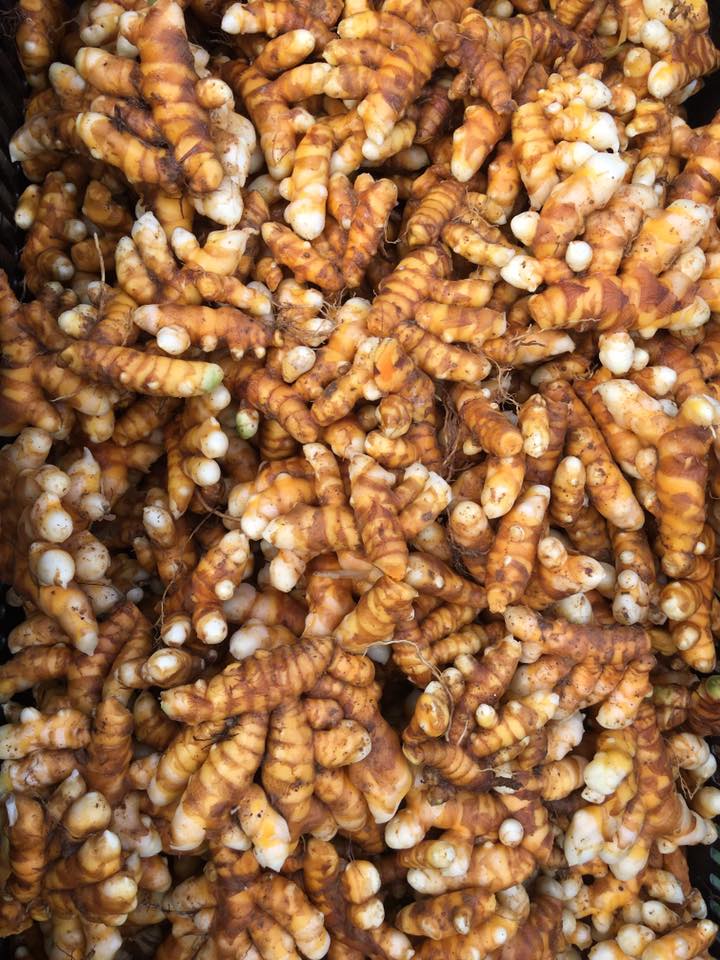

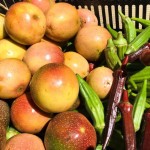 the hidden garden kitchen
the hidden garden kitchen